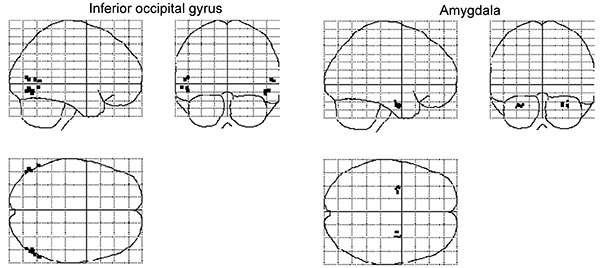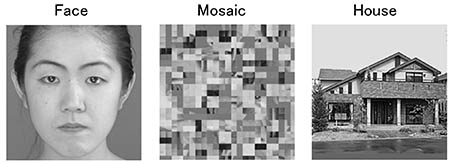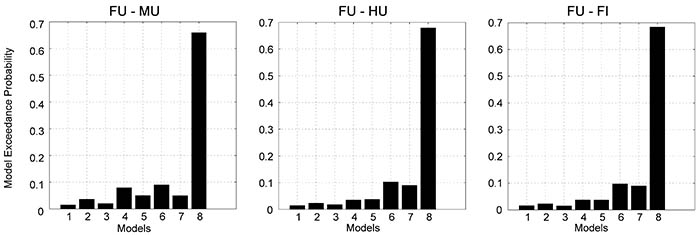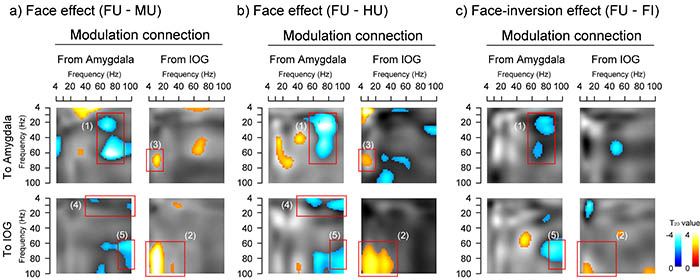SATO Wataru Laboratory
Bidirectional electric communication between the inferior occipital gyrus and the amygdala during face processing
(Sato*, Kochiyama*, Uono, Matsuda, Usui, Usui, Inoue, & Toichi (* equal contributors): Hum Brain Mapp)
Faces contain multifaceted information that is important human communication.
Neuroimaging studies have revealed face-specific activation in multiple brain regions, including the inferior occipital gyrus (IOG) and amygdala; it is often assumed that these regions constitute the neural network responsible for the processing of faces.
However, it remains unknown whether and how these brain regions transmit information during face processing.
This study investigated these questions by applying dynamic causal modeling of induced responses to human intracranial electroencephalography data recorded from the IOG and amygdala during the observation of faces, mosaics, and houses in upright and inverted orientations.


Model comparisons assessing the experimental effects of upright faces vs. upright houses and upright faces vs. upright mosaics consistently indicated that the model having face-specific bidirectional modulatory effects between the IOG and amygdala was the most probable.
The experimental effect between upright vs. inverted faces also favored the model with bidirectional modulatory effects between the IOG and amygdala.
The spectral profiles of modulatory effects revealed both same- (e.g., gamma-gamma) and cross- (e.g., theta-gamma) frequency couplings.



These results suggest that the IOG and amygdala communicate rapidly with each other using various types of oscillations for the efficient processing of faces.
Return to
Recent Research.
Return to
Main Menu.




